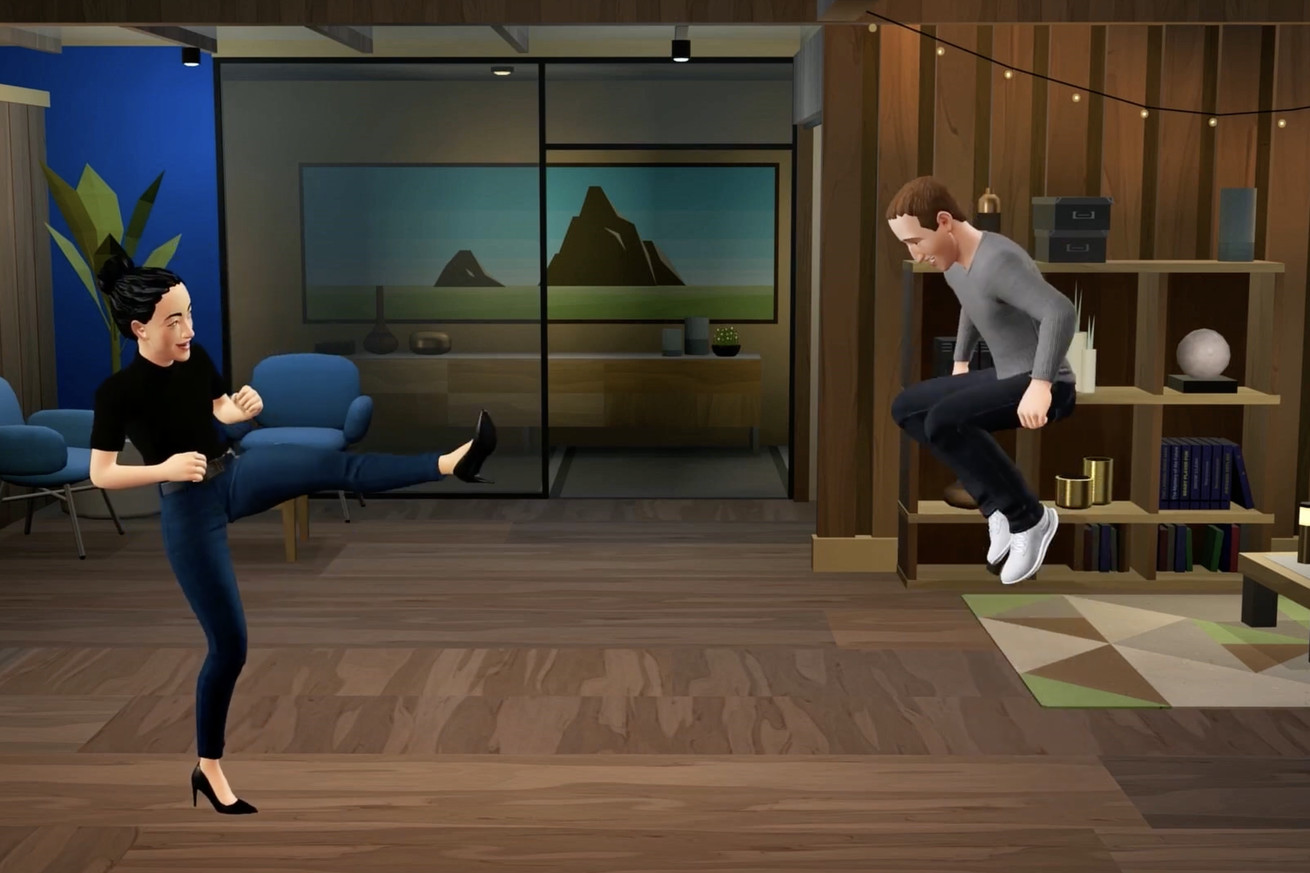Meta used an AI model to help bring legs to avatars. | Image: Meta
Virtual avatars in Meta’s Horizon Worlds universe have gained legs, according to UploadVR. You should now see them when looking at other users or checking out your own avatar in a mirror, but your own avatar’s legs aren’t visible from a first-person perspective.
The addition of lower limbs — previously described by Mark Zuckerberg as “probably the most requested feature” — in Horizon Worlds comes after they first appeared in Quest Home. And they arrive as the platform sets out for growth beyond virtual reality with new experiences designed for mobile and the web.
“Seriously, legs are hard, which is why other virtual reality systems don’t have them either,” Zuckerberg said last year. (That statement wasn’t entirely accurate since systems like VRChat have already allowed legs on avatars.) Still, a glitchy depiction of legs would quickly break your sense of immersion in the VR realm. To solve for challenges like occlusion, Meta built an AI model that’s used to predict the position of your whole body.
Meta has also gradually continued to introduce more body shapes and more refined, better-detailed textures for its avatars. In April, the company announced over 1 billion avatars have been created across its platforms. “Self-expression and representation matter — it’s what makes your avatar feel like you — and we’ll continue adding more options over time, working toward a future where everyone can create an avatar they love,” the company said then.
As UploadVR notes, third-party apps can’t yet replicate these avatars with legs; that might have to wait for Meta’s Connect conference later this month, where we’re likely to get a much closer look at the upcoming Quest 3 VR headset. Meta has already announced that the device will cost $499.99.



![[CITYPNG.COM]White Google Play PlayStore Logo – 1500×1500](https://startupnews.fyi/wp-content/uploads/2025/08/CITYPNG.COMWhite-Google-Play-PlayStore-Logo-1500x1500-1-630x630.png)